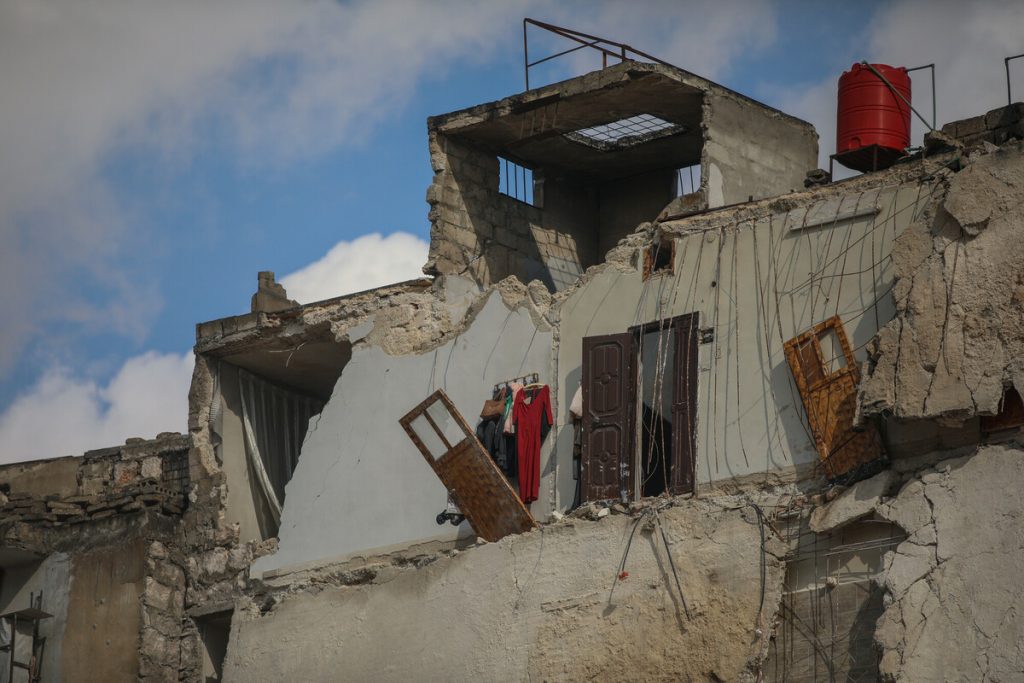In Bangladesh, Refugees Help Design Handwashing Stations
Creating effective handwashing facilities in the Rohingya camps means embracing community input.
The bad news came on May 15, 2020: in a camp for Rohingya refugees in Bangladesh, the first case of COVID-19 was detected.
The arrival of the disease is unwelcome anywhere, but no one wants to see what happens when the virus gets a toehold in communities like these.
"Forty thousand people per square kilometer," says Oxfam’s Enamul Hoque. "That's twice the population density of Dhaka. You can’t imagine how crowded the camps are."
Hoque is Oxfam’s coordinator for water, sanitation, and hygiene (WASH) in the Rohingya camps. When thousands of refugees arrived from Myanmar in 2017, fleeing unspeakable violence, he was there to help establish a system that now includes water tanks and taps, handwashing stations, latrines, and a fecal sludge processing plant. But existing handwashing facilities, though effective against diarrheal disease, could be vectors for the hyper-contagious new virus, so Hoque and his team set out to create a safer design.
Hand-cranked water spigots were out, foot pedals were in, and simplicity was key.
So was the local feedback.
Girls Flex Their Muscles
“We installed a prototype of the handwashing station and then interviewed about 43 people after they used it,” says Hoque. “Based on what they told us, we altered the design.”
Oxfam has an approach to designing water and sanitation facilities we call social architecture.
“It means the community is part of the design process,” says Hoque. “We are especially interested in hearing input from women and girls, because they have so many responsibilities related to water and keeping their families clean.”
In this case, he says, “girls in particular wanted to engage with us about the design. They weighed in on everything from the number of legs it should stand on to the installation of hooks for hanging stuff. They told us a mirror would be a big improvement, so we’re adding one. It’s important that a handwashing station be something you like to use, so all of this was significant. In important ways, the station is their design.”
“What was also significant is that this process helped girls take charge of a piece of their lives,” says Hoque. “The Rohingya refugees have experienced so much trauma and loss, and girls stuck in the camps have almost no space to exercise their minds and their power. We invited them to think like architects and design something that would benefit them and their families.”
“Innovation takes time and resources that can be very hard to come by in emergencies like this,” he says, “but the results can be far-reaching.”
For the Caregivers
The new handwashing station is ready for manufacture. Every aspect of it, from the size and shape of the basin to the height of the water tank has been vetted by the women and girls who will use it most.
“In the camps, there are very important dos and don’ts,” says Oxfam innovation officer Iffat Fatema. “Do wash hands. Don’t waste water. Do avoid crowds. Don’t risk contamination by touch."
"The handwashing station enables people to follow all the rules," explains Fatema. "The foot pedals make it possible to wash hands without contaminating a tap or soap container, and to avoid waste, they produce a slow stream of water. And there will be one for every few houses, so it should be possible to visit them while keeping social distance."
Handwashing Station Features
- Foot pedals so users don't need to touch anything with their hands.
- The height makes it easy to operate for children and people in wheelchairs.
- The soap is liquid and enclosed, which discourages both germ-sharing and pilfering.
- The structure offers so little surface area that when cyclone winds come roaring through the camps, chances are it won’t topple.
- Each handwashing station will be fitted with a mirror.
"Having a handwashing station near the home makes it much more likely that people will practice safe hygiene," Fatema adds.
“Women have to carry water from water points to their homes, often while carrying babies at the same time," she says. "It’s hard work, so they tend to use that water for their top priorities—cooking and cleaning—rather than washing hands. Which means that in this emergency, the handwashing stations will almost certainly save lives. They will be the superheroes."
The first 300 stations will be rolled out soon and distributed around three camps.
The local public health authorities, who also contributed to the design and development of the new stations, are pleased with the results, but if the people who use them have more to say, the Oxfam team will go back to the drawing board to make adjustments.
Hoque is worried about the suffering the virus will inflict on these communities, and the caregivers who will likely bear the brunt of it.
“These stations,” he says, “are dedicated to the refugee women.”
About Oxfam's Response
In response to the coronavirus crisis, Oxfam and 23 Bangladeshi partner organizations have stepped up our work on helping the poorest communities gain access to clean water and sanitation facilities, and the materials and information they need to protect their health through safe hygiene.
The crowded camps for Rohingya refugees are particularly vulnerable to the spread of COVID-19. Oxfam and partners are providing water, sanitation, and hygiene support to 173,000 camp residents and 9,000 people in the surrounding communities.
With enough funding, we aim to deliver cash to 100,000 families in and around the camps, enabling many of the most vulnerable families to buy food and other essentials from local businesses that are also struggling in this crisis.
Elizabeth Stevens is a senior humanitarian communications officer with Oxfam America.

